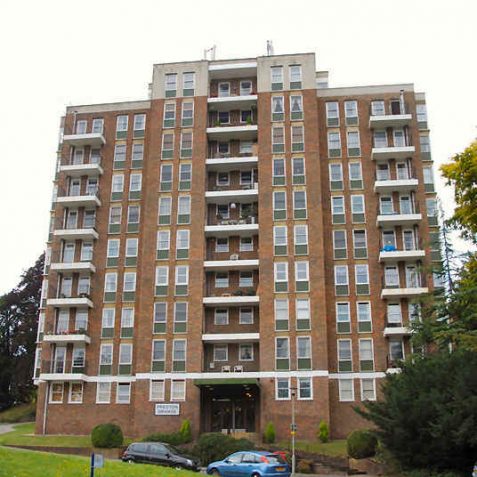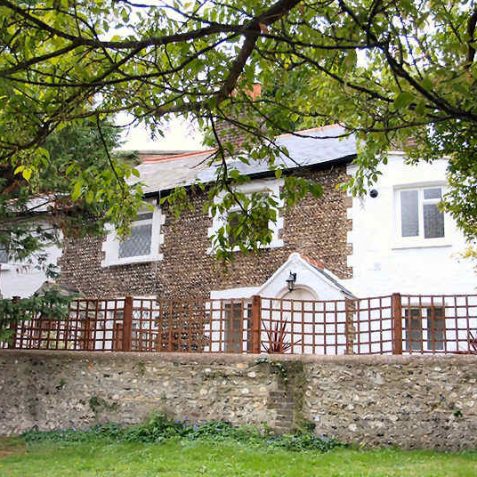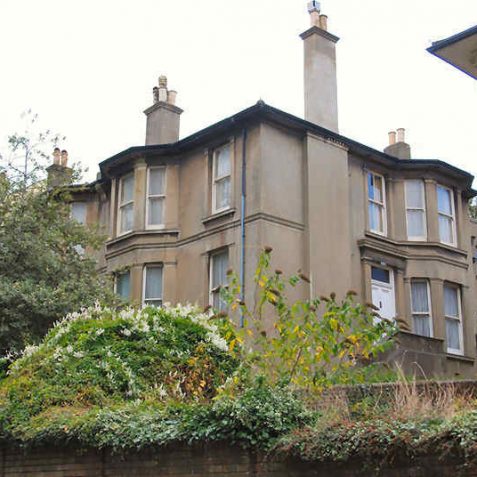Large villas replaced by office blocks
Please note that this text is an extract from a reference work written in 1990. As a result, some of the content may not reflect recent research, changes and events.
Preston Road runs the length of the former Preston parish, from Preston Circus to London Road (Patcham) near Clermont Road.
b) ALONGSIDE THE PARK: The road alongside Preston Park was once rather narrow, hemmed in by high walls with a raised pathway along the western side. From 1874 a line of about twenty large villas was erected opposite the park, but since the 1960s they have been gradually replaced by large office blocks and now only one remains, at the corner of Lovers Walk. Before the villas were built, Preston Dairy Farm stood on the site now occupied by the General Insurance Buildings. Preston Grange, an eleven-storey block of forty-eight flats, stands on the site of a large house of that name which was originally erected in 1881 for William Stroudley, superintendent engineer of the Brighton railway works; the decorative stained-glass windows of the house, which was originally known as Bosvigo, may be seen at the Bluebell Railway’s museum at Sheffield Park. {15,83,131,316}
Lovers Walk was once a hedge-lined footpath from Preston Road to Seven Dials along the lines of Stanford Road and Prestonville Road; a bridge under the railway was constructed in 1841. In 1831 the path was connected with a famous murder (see ” Trunk Murders “), but with the construction of the railway’s upper goods yard and Dyke Road Drive in 1878, Lovers Walk became restricted to the present cul-de-sac off Preston Road, with steps up to Dyke Road Drive. Several large villa residences were erected at this time, along with 1-4 Lovers Walk Cottages at the end of the road. These four cottages are faced in knapped flint and yellow brick, but the adjacent nos.5-6 are considerably older and date from the late eighteenth century when they probably belonged to Preston Dairy Farm. {15,108,109}
Any numerical cross-references in the text above refer to resources in the Sources and Bibliography section of the Encyclopaedia of Brighton by Tim Carder.








Comments about this page
Beautiful houses
My aunt Mrs Edna Streatfield lived at 4, Lovers Walk Cottages until her death in 1984. We spent many a happy holiday there when we were children; brings back very fond memories!!
On the one side of Lovers Walk/Preston Road junction there now stands the Travelodge hotel. This occupies a site which was once filled with 2 of the large houses of the type that can still be seen on the west side of Preston Road further north, up to the Rock gardens.
One of the houses mentioned, I think it was number 167 was at one time used as a school and was named Preston College. It was run by a Major Bastock who later served as mayor of Telscombe. I was a pupil there around 1952-3. The school moved later to Lindfield and the 2 plots must have been merged because around 1976 I did a spell as a draughtsman at a small (about 6 stories) office of PCR (Preece Cardew & Rider) which was on the same site. Many years later, in the early 2000s I stayed for a night in the Travelodge; well it seemed the obvious thing to do!
In the early 1960s Preston Rd and Lovers Walk were my paper round. We lived in Dyke Rd Drive and the large building on the corner with Preston Rd was the newsagents. The round was not easy as all the big houses along there had long gravel drives with big dark trees lining the route, so on a winter morning not a welcoming prospect. The large houses were by then all flats, with some former stables at the rear used as housing, so even further along the dark drive! Often only one delivery per big block. Many of the residents were elderly and ‘posh’ so many Telegraphs and Times to deliver. On Sundays the bag was even heavier. There was no obvious roundabout route, it was a long linear route, so when I reached Nestor Court next to The Rockery it was a long walk back to the shop.
Add a comment about this page